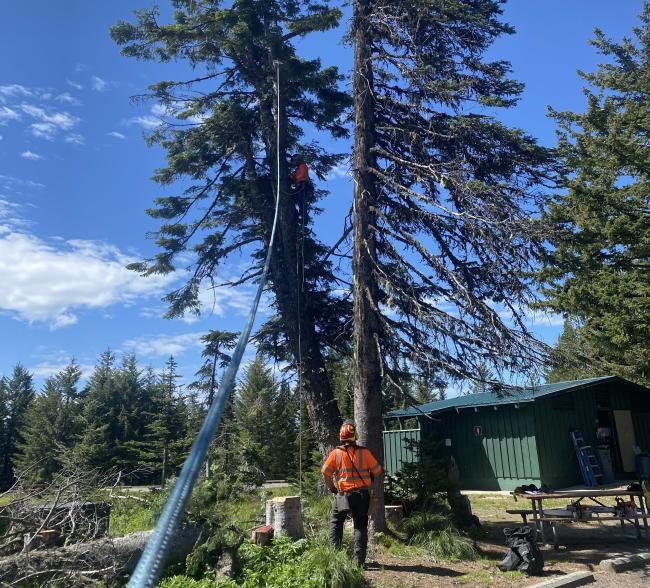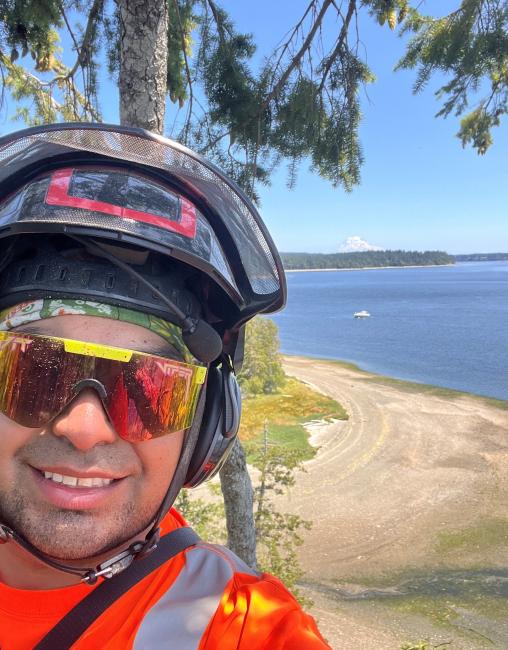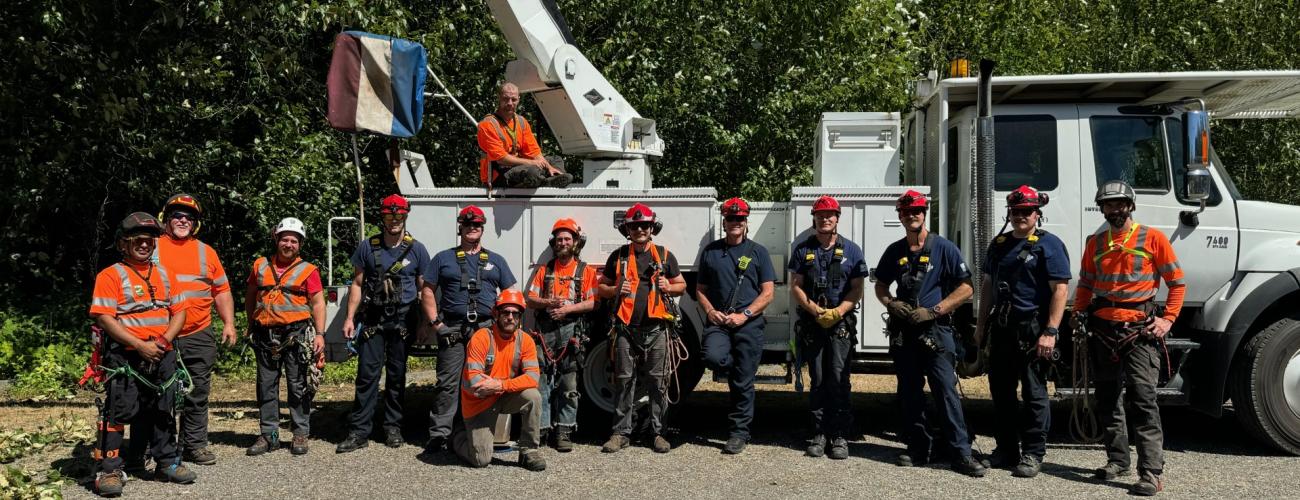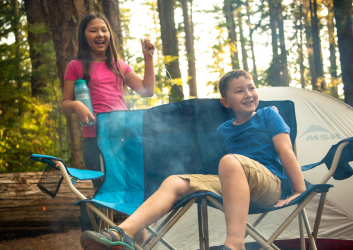Arbor Crew goes out on a limb for trees
State Parks’ professional arbor crew blends science, technology and tree work for public safety and conservation.
“What is your earliest tree memory?” Washington State Parks Arborist Mik Miazio once asked visitors at Millersylvania.
Most recalled climbing trees or eating fruit from neighboring orchards. Grandparents’ houses and childhood backyards were common themes.
Trees and forest ecosystems are among Washington’s icons, and many nature lovers equate the outdoors with trees.
Parks’ Arbor Crew serves State Parks’ trees and shrubs, and their work keeps visitors safe from hazardous tree fall.
Despite Miazio’s question to the Millersylvania visitors, the public doesn’t often see the Arbor Crew. But signs of their work are all over our parks, if you know where to look.

A wide scope of work
The State Parks Arbor Program consists of three teams of two arborists and a manager. One team handles Eastern Washington, and two teams handle the southwest and northwestern regions. They tackle bigger jobs as one team. Each crew travels hundreds of miles a month. They work with a variety of arboriculture that ranges from the yew and madrone trees of the San Juan Islands to the Ponderosa pines and Engelmann spruces of the Blue Mountains.
With a small group and a vast territory, the crew concentrates on public safety. They examine trees for disease, defects, damage and danger. They remove trees that might fall, or they turn them into habitat snags, which also benefit wildlife.
The eastside crew thins trees and branches that might otherwise act as wildfire fuel. They prune for preventative maintenance, and they replant trees and shrubs a year or so after a fire.
The westside crews deal mainly with trees in forested parks. In winter and spring, they remove fallen trees after storms.
In addition to Parks, the crew works for WSDOT, WDFW and DNR. These agencies have different missions than ours, so the arborists may take out healthy trees that threaten power lines or highways. Two of the seven positions are funded by these contracts.

Certification and education
Crew members get certified by the International Society of Aboriculture, which requires a baseline of work experience, examination and continuing education credits. Their training covers mycology, botany, climbing, machinery and much more. The team members also drive trucks and tow heavy equipment.
A dangerous job
The Bureau of Labor Statistics lists tree work as one of the most dangerous jobs in America – it competes with commercial fishing most years for the top spot.
Ten-hour workdays can turn into 12. The eastside drives get blazing hot or snowy, while westsiders deal with rain and traffic snares. The crews may be on the road an entire work week.
But Miazio, who works on the Southwest Arbor Crew, said he benefits from traveling with teammate Beowulf Brower.
“We decompress and debrief,” he said. “We talk about everything from complex strategy to very personal matters. It allows us to have a perfectly clear mind when it’s time for action.”
Eastside arborists James Gouldin and Edwin Torres are self-described introverts. They may drive in comfortable silence, but they also use the time for strategizing.
“We discuss the safest way to get the job done and what equipment is needed,” said Gouldin. “Safety is the key element that keeps us going home to our families at night.”

Tech assist
The crew praises technology as a time saver and risk reducer.
They use laser rangefinders to measure tree height from the ground, and resistographs, which drill tiny holes in trees to detect hollow spots. They also operate bucket trucks, skid steers and chainsaws.
Torres particularly appreciates the resistograph, which spits out a graph showing internal rot. A wave on the graph indicates healthy wood, and a flatline shows decay.
“You get a visual of what’s inside a tree,” he said. “Without that equipment, you’re just making an educated guess.”
Miazio adds that Bluetooth capacities in the resistograph allow the crew to send data directly to Parks GIS staff.
Gouldin says improvements in GIS mapping have been a game changer.
“More Rangers and staff are starting to use GIS to map tree work for us,” he said.
The recent addition of an aerial lift also makes their work safer, with less wear and tear on their bodies.
“Climbing trees is fun,” said Torres, “but it’s laborious and it can be dangerous, especially when you’re dealing with a hazard tree that you don’t want to be tied into.”
The crew also has Bluetooth inside their hardhats. This allows them to confer and provide updates while one teammate is in a tree or the bucket truck.
Miazio called it, “maybe the single most important piece of technology we have when it comes to safety.”

The right philosophy
Aside from the agency’s investment in equipment and continuing education, the crew appreciates Parks’ approach to arboriculture.
“The work is not as production-oriented as some private-sector jobs,” said Gouldin. “We are not trying to make money for a company; we are making parks safe and taking care of trees.”
Originally published April 21, 2025




